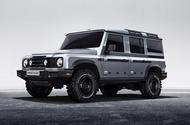Singular utilitarian focus is matched with modern tech and powerful BMW engines
Sir Jim Ratcliffe’s rugged new off-roader, the Ineos Grenadier, has broken cover with a variety of clear design references to the old Land Rover Defender and a specification that could easily pass for a modernised version of the 1948 original.
Despite this, the Grenadier is an all-new 4×4 created by a ground-up team and brand, with modern components, a state-of-the-art powertrain and possibly an even more singular purpose than the icon that it seeks to supplant.
Similar in size to the latest Mercedes-Benz G-Class and powered by a modular range of six-cylinder BMW diesel and petrol engines, it’s expected to be priced from £40,000 when it hits the market late next year, initially as a five-door station wagon then “soon afterwards” as a four-door pick-up truck. A short-wheelbase car may come after, alongside other versions.
Production will take several years to ramp up for markets around the world, but insiders say it will be profitable at an annual output of about 25,000.
Ratcliffe, founder and majority owner of the £50 billion British petrochemicals group Ineos, is a steadfast devotee of the old Defender. He came up with the idea of building a replacement of his own when Jaguar Land Rover declined to sell him its designs or tooling to continue when production ceased at Solihull after 67 years in January 2016.
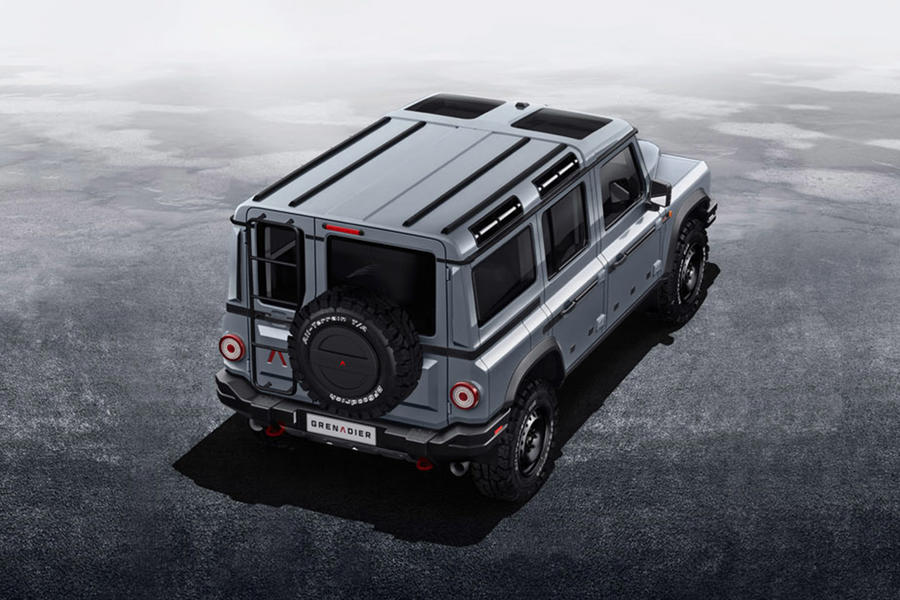
Two years ago, after forming Ineos Automotive, Ratcliffe enlisted his friend and favourite superyacht designer, Toby Ecuyer – who is usually based on the south coast of England – to form and lead the Grenadier design team. He also appointed former chemical engineer Dirk Heilmann as Ineos Automotive CEO and set him the task of creating the 4×4’s mechanical package, working with a band of engineers based mainly at Magna Steyr in Graz, Austria.
Named after Ratcliffe’s favourite pub in Belgravia, London, the Grenadier is being unveiled now, 18 months before its expected on-sale date, because its creators believe they will find it easier to complete a tightly planned million-mile global test programme if they can drive it “in plain sight”. Testing began last winter in Sweden. Meanwhile, two new factories are being built: one in Portugal for chassis-making and one in South Wales for final assembly.
Last week, Autocar held a virtual meeting with Ecuyer, Heilmann and commercial director Mark Tennant to see the wraps come off the Grenadier and hear more about its purpose and capabilities. We saw the finished exterior but not the “hose-it-out” interior Ratcliffe has ordered because details are still being finalised.
“We’re using the line ‘Built on Purpose’ for the Grenadier,” said Tennant, “because for this project, function must always lead. We’re focusing on a high standard of off-road performance first, and there’s an Ineos tradition of using straightforward, simple language for a straightforward, simple car. Not that we’re Luddites; it’s not spartan or out of date. It will have all the connectivity and screen technology you would expect. And it will be comfortable, too, because owners will spend many hours in their machines.”
Body design
Ecuyer doesn’t shy away from remarks about the Grenadier’s resemblance to the Defender but stresses that the team came to the current design and specification after researching a large number of competitor vehicles, many of which were bought for benchmarking.
He said: “We had Jeeps, Land Rovers, Toyota Hiluxes, a Toyota FJ40 [Land Cruiser], Nissan Patrols, Ford Broncos. And we looked at vans, lorries, Unimogs, military vehicles, tractors. African-spec vehicles were particularly interesting. They all shaped our plan for a vehicle that would be extremely capable but also very honest and uncomplicated.”
The result is a simple, well-proportioned and familiar-looking off-roader with straight sides, a clamshell bonnet rising above flat-topped front wings, a steep, fairly flat windscreen and a flat roof with rain gutters running all the way around.
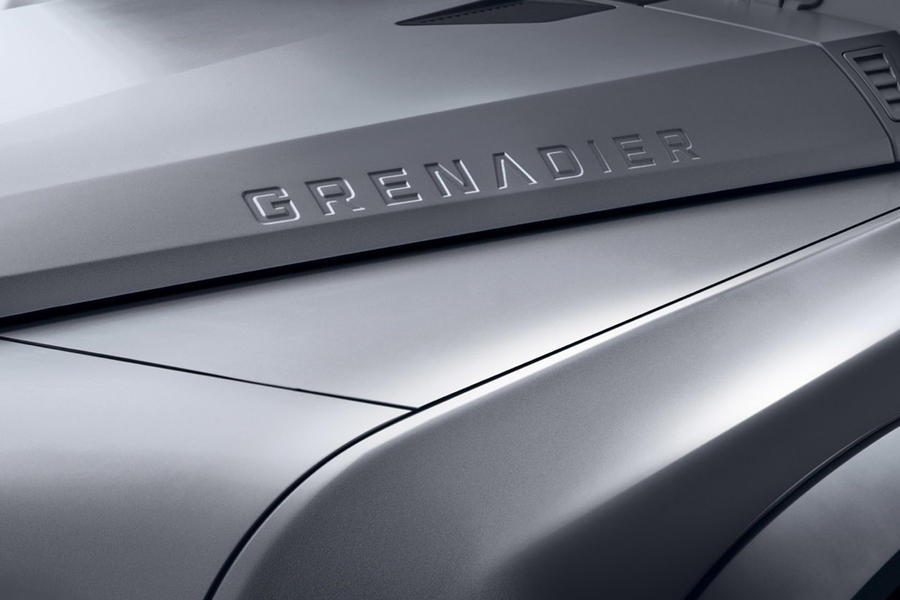
The grille is simple and vertical, the LED headlights are round and the large wheels are positioned to minimise body overhangs and take advantage of rubberised wheel arches.
The station wagon body has three windows each side. Like the windscreen, they and a lot of the panelling appear to be flat, but they aren’t quite. Ecuyer said very gentle curvature confers a modern sophistication on the design it otherwise wouldn’t have.
Most reminiscent of the Defender is the Grenadier’s body ‘shoulder’ that runs from the top of the front wings in a dead straight line right to the rear end. Ecuyer said this gives room for ‘stuff’ inside the bottom half of the doors while allowing their tops to be “no thicker than they need to be”.
The doors have external hinges that help with the door removal that will suit some users and give the car’s design the honesty Ecuyer sought.
“It was really important to us that this design should be easily read, with nothing complicated or mysterious about it,” said Ecuyer. “You can see how the doors and bonnet are attached. There are no hidden pillars or tricks with glass. It’s comfortable to be around, not too clever. And there’s none of the clever technology people have developed to sanitise big SUVs. It’s just honest.”
Ecuyer admitted to plenty of debate about the Grenadier’s rear-end design: for a long time, the team were settled on a classic split tailgate, before deciding late in the day on the big-door-small-door layout.
Tailgates can make vehicles hard to load or unload, said Ecuyer, and the swing-out spare wheel carrier would have been “a nightmare”.
The small door can be opened before the large one to provide access to the space-saver tool compartment that’s innovatively pressed into its skin below the glass.
The round tail-lights “share a common language” with the round headlights and are mounted ideally on the extra space provided by the body shoulder, happily where modern law requires them to be visible. “They’re the result of a very practical problem,” said Ecuyer, “not a wafty sketch in a cafe somewhere…”
Interesting evidence of Ecuyer’s nautical design background abounds. The roof can be used to carry loads without a rack, and one artful touch is the provision of four tie bars on the sides of the roof that look a lot like the roof lights of an old Land Rover.
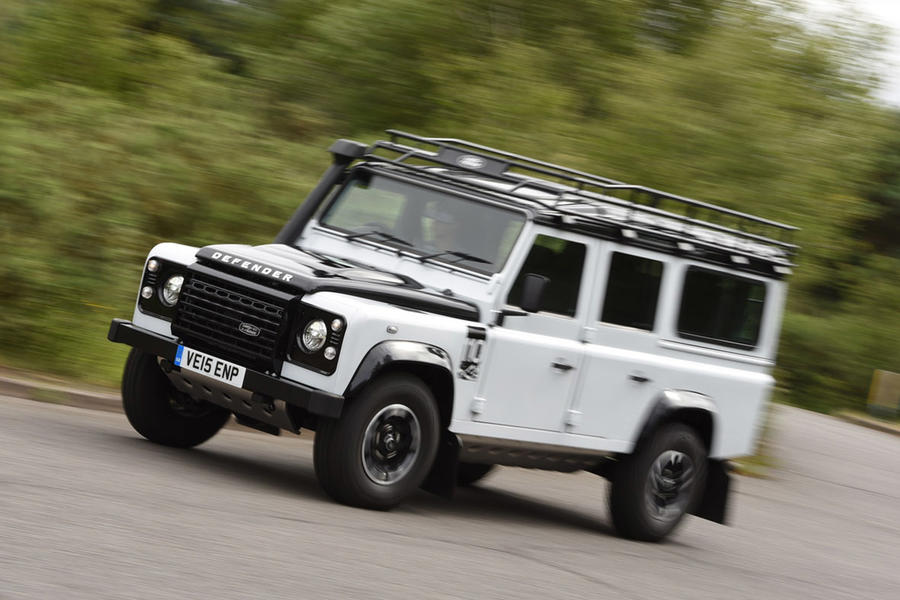
There are also pre-wired “utility rails” running through the doors and under the rear side windows, because Ineos expects owners to use their Grenadiers for camping. These rails will allow for the mounting of lights, for example.
Although they’re not talking about the interior today, the Ineos team makes clear that it includes more such features. “We haven’t swathed the dash just to make it look nice,” said Ecuyer. “If there’s space available, we open it up for use.”
Ineos will design factory-fit options and aftermarket kit for the Grenadier but isn’t shy about making it ‘open-source’ so other equipment makers can produce add-ons to suit.
“Every owner’s use for their vehicle will be different,” said Heilmann, “and we’re very happy with that.”
Chassis and powertrain
Heilmann said he expects the Grenadier to be heavier than the old Defender 110, which is narrower but slightly longer, but that’s mostly because the Land Rover is a considerably simpler, less well-equipped vehicle with a much lighter powertrain. The target weight is around 2400kg, but today’s initial prototypes are 80kg too heavy, so weight must be reduced to improve the Grenadier’s all-important off-road performance.
Ineos’s engine choice is the BMW B57/B58 family, so each Grenadier will have a modular 3.0-litre petrol or diesel straight six that sends its drive through a ZF-supplied eight-speed automatic gearbox (and a separate low-range transfer case). Depending on spec, these engines make anything from 261bhp to nearly 400bhp in their BMW applications.
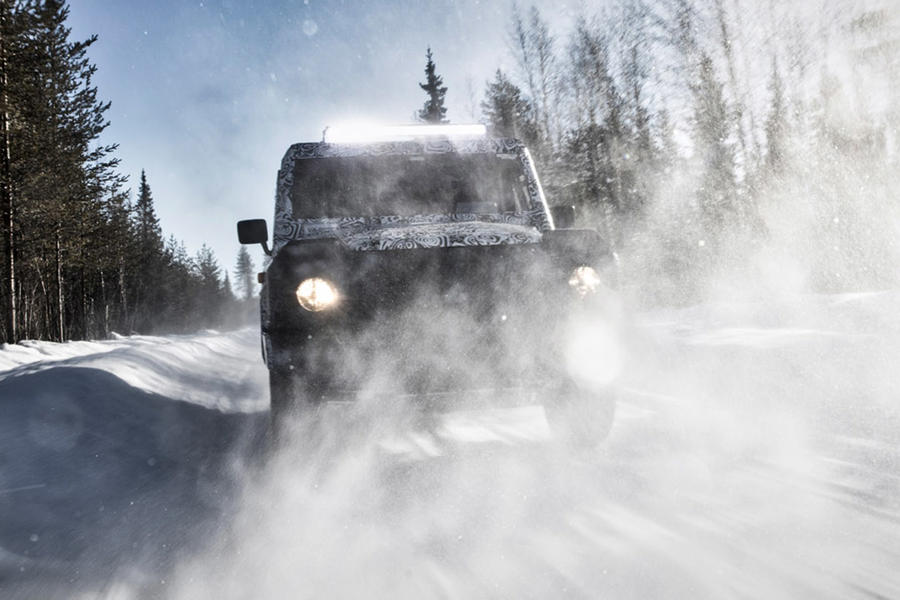
Heilmann said that although the Grenadier’s performance will make off-roading a priority, its on-road ability will be “fine for anyone who’s used to driving, say, a Jeep Wrangler”. However, the performance potential will probably require an on-road speed limiter.
The car’s relatively old-tech body-on-frame chassis, twin live axles and non-independent coil suspension are a rarity nowadays; even the Hilux has independent front suspension. However, the body is a complex mixture of aluminium, high-strength steel and composites.
“We’ve had to learn that aluminium isn’t always the best choice for strength and crash purposes,” said Heilmann, “so we’ve chosen the right materials for the right jobs.” But much of the outer skin – the bonnet, the doors and the mudguards – is aluminium.
Timetable and marketing
Tennant and Heilmann say the project is running only a few weeks behind, despite Covid-19, and they’re looking now at ways of getting that time back. “It’s a tight schedule,” Heilmann said, “but by 2021 we want to be doing our first production runs, and at the end of 2021 we should have production cars coming off the line.
“For now, the time-critical areas are going well. Our key suppliers – people like our axle partner in northern Italy – are with us. The challenge is to get the components together and have them properly tested.”
Tennant said decisions about the dealer network are still being made but that Ineos wants to sell the Grenadier as directly as it can. He plans an announcement soon about how and where cars will be serviced.
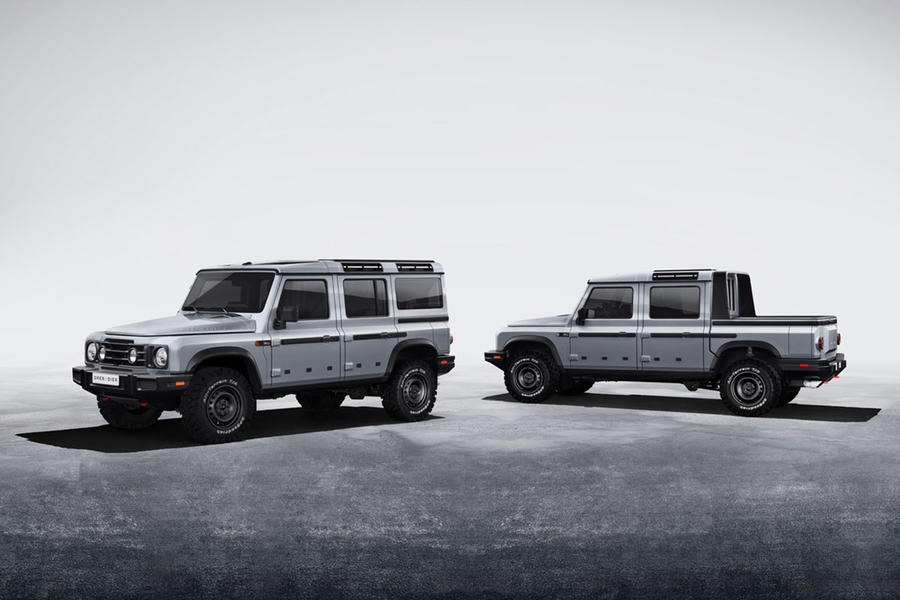
“The world of car retailing is moving rather rapidly at present,” he said ruefully.
For a start, Europe and North America will be the key markets, but Ineos is also very interested in Australia, Africa and South-East Asia, where it is confident the Grenadier’s ruggedness will go down well.
“Experience centres will be a high priority,” said Tennant. “No one is going to want to buy one of these just by driving it around the block.”
Q&A: Toby Ecuyer. Ineos Grenadier design leader

So you’re not a car designer?
“No, at least not until now. I grew up on a farm in Derbyshire around tractors and Land Rovers, but I was interested in cars.
“When I was about nine, I wrote to Austin Rover with some car sketches. They wrote back politely, basically saying the cars were terrible but that they had a design department and, when I was old enough, I should try to join their training scheme. Until then, I didn’t realise design was an actual job, and that really sparked my interest to know how things were created.”
How did you get into design?
“I trained as an architect and then got into boat design – long projects, 80-metre superyachts and for private customers. That’s how I got to know Jim Ratcliffe. I designed a couple of boats for him and looked after a building project. I was involved in the early talks about the Grenadier, then Jim asked me if I would like to be involved. It sounded interesting, and it has been fascinating.”
Has learning a new discipline been hard?
“Well, I’ve learned that it isn’t necessarily wrong to change horses. There are some interesting parallels in surface design and design thinking. And although I’m the design leader, there are others in the team. I haven’t done all this on my own.”
What’s it like working with Jim Ratcliffe?
“Jim loves the design process, and he gets very involved. He has brilliant ideas. My job is to help him get them onto paper. When you’re building a superyacht, you’re talking about a four-year programme, so you get to know a person really well. We had a good friendship – and a mutual enjoyment of cars.”
Is this a car to love or a tool?
“Both, really. We were very interested in vehicles that had both proven themselves in the field and found their way into people’s hearts.
“Not all modern SUVs were like this. There’s an honesty about cars in our collection that people tend to adopt and identify with, and we wanted that for Grenadier. That’s why we assembled our collection of vehicles for benchmarking. They were all vehicles that were well-respected.”
What will you think when people draw similarities to the Land Rover Defender?
“It has been fascinating, benchmarking all the cars we have. One thing I’ve learned is how little there is between cars. I mean, you only have to change a vehicle a little to make it look like something different. Shift the headlights a bit and you’ve suddenly made a Ford Bronco.”
How did you define your objectives for the Grenadier?
“We made a list of qualities we wanted to achieve: assured, robust, faithful, dependable and purposeful. We used them as a kind of checklist. Every time we had a decision to make about the car, we would run through the list to see if it met them. I’m hoping people will recognise those things in the production car.”
READ MORE
Official: Ineos confirms Bridgend factory for Grenadier 4×4
Jaguar Land Rover readies 2021 Range Rover amid lockdown delays
Source: Autocar
